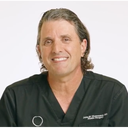Posted underRevision Rhinoplasty q&a
Can a rasping correct growing callus and asymmetry 12 years post rhinoplasty? (Photos)
I had a closed rhinoplasty 12 years ago to correct a deviated septum from a blow to the face and a dorsal hump from a nose break in my teen years. As soon as the splint came off, a prominent bump was noticeable on the right side of my nose bridge and a divit. The bump has become more prominent with time and is creating more asymmetry as it appears to be shifting to one side. Could a simple rasping fix the problem or is this going to need a total re-do?
Answers (5)
From board-certified doctors and trusted medical professionals
More Revision Rhinoplasty Questions
See all Revision Rhinoplasty Q&AWE SEND PRETTY
EMAILS
What’s trending? Who’s turning heads? Which TikTok myths need busting? We’ve got you. No fluff, no gatekeeping—just real talk. Get our free, unfiltered newsletter.



